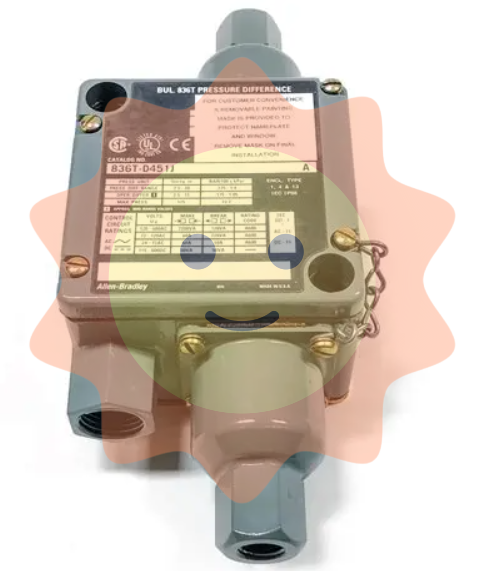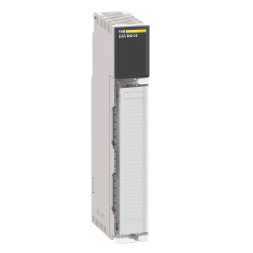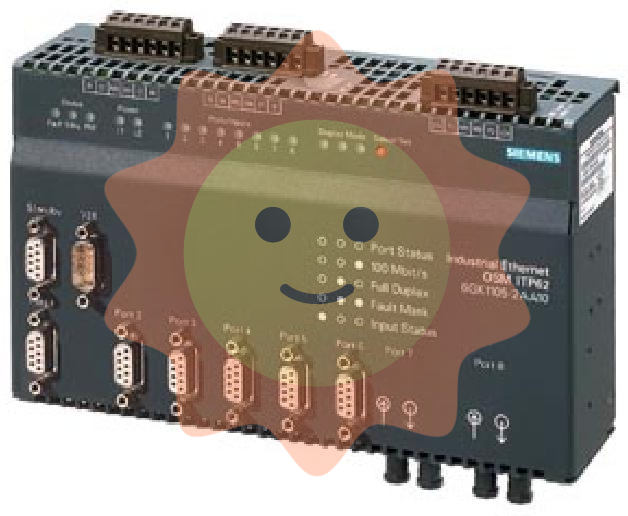The ABB 3BHE03205R0101 PCD235B101 excitation control module is the core control unit in ABB's synchronous motor control system, specifically developed to achieve precise control of the excitation system for synchronous generators and synchronous motors. This module integrates high-precision signal acquisition circuits, high-performance microprocessors, and adaptive control algorithms, which can adjust the current size and waveform of the excitation winding in real time, ensuring that the motor maintains stable terminal voltage or power factor under different load conditions. At the same time, it has emergency control functions such as strong excitation and demagnetization. It is widely used in power generation (thermal power, hydropower, new energy), industrial drive (large wind turbines, water pumps), ship power and other fields, and is a key equipment to ensure the safe, efficient and stable operation of synchronous motors.
ABB 3BHE032025R0101 PCD235B101 Exciter Control Module
Product Overview
The ABB 3BHE03205R0101 PCD235B101 excitation control module is the core control unit in ABB's synchronous motor control system, specifically developed to achieve precise control of the excitation system for synchronous generators and synchronous motors. This module integrates high-precision signal acquisition circuits, high-performance microprocessors, and adaptive control algorithms, which can adjust the current size and waveform of the excitation winding in real time, ensuring that the motor maintains stable terminal voltage or power factor under different load conditions. At the same time, it has emergency control functions such as strong excitation and demagnetization. It is widely used in power generation (thermal power, hydropower, new energy), industrial drive (large wind turbines, water pumps), ship power and other fields, and is a key equipment to ensure the safe, efficient and stable operation of synchronous motors.
Core Basic Parameters
Product Model
3BHE032025R0101、PCD235B101
manufacturer
ABB Group
Core processor
32-bit industrial grade floating-point microprocessor with a clock frequency of ≥ 200MHz
Applicable motor types
Synchronous generator, synchronous motor
Input signal type
Voltage signal (0-10V/4-20mA), current signal (4-20mA), frequency signal (50/60Hz)
Output excitation current range
0-500A (expandable through external power unit)
Accuracy of excitation voltage regulation
≤± 0.5% (under steady-state conditions)
Power factor adjustment range
0.8 (lag) -0.95 (lead)
power supply voltage
DC 24V ± 10% or AC 220V ± 10%
Working temperature range
-25 ℃~60 ℃ (industrial wide temperature design)
response time
≤ 10ms (when a step signal is input)
communication interface
RS485(Modbus-RTU)、PROFINET、Ethernet/IP
Installation method
Standard DIN rail installation (35mm)
Core functional characteristics
1. Multi mode precise excitation control
The module supports multiple excitation control modes, including constant voltage control (maintaining stable motor terminal voltage), constant current control (accurately controlling excitation current), constant power factor control (optimizing grid operation efficiency), and constant reactive power control, which can be flexibly switched through software according to on-site conditions. Adopting adaptive PID control algorithm, it can compensate for real-time load fluctuations, grid voltage changes and other interference factors, ensuring regulation accuracy of ≤± 0.5%, effectively improving the stability of motor operation and power quality.
2. Comprehensive emergency protection functions
Integrated multiple safety protection mechanisms, covering over excitation protection (preventing excessive excitation current from burning out windings), under excitation protection (avoiding motor demagnetization and step loss), over-voltage/under voltage protection (dealing with power grid abnormalities), over-current protection, temperature protection, and excitation circuit fault diagnosis functions. When abnormal working conditions are detected, the module can quickly respond within 10ms, triggering strong excitation (increasing excitation current to deal with short-circuit faults), demagnetization (quickly cutting off the excitation circuit) or alarm signals, to maximize the protection of the motor and excitation system safety.
3. High reliability and anti-interference ability
Adopting industrial grade reinforced design, the core components undergo high and low temperature, vibration and shock screening, and the circuit layout adopts optoelectronic isolation and electromagnetic shielding technology. It has passed the IEC 61000 series EMC certification and can resist strong electromagnetic interference, voltage surges and other interferences in industrial sites. The module has self diagnostic function, which can monitor its hardware status in real time (such as CPU, power supply, interface circuit), and provide abnormal feedback through fault codes. The mean time between failures (MTBF) exceeds 80000 hours, making it suitable for harsh industrial environments.
4. Flexible system integration and expansion
Compatible with various ABB excitation power units (such as thyristor rectifier bridges and IGBT power modules), it can directly interface with synchronous motors of different power levels without the need for additional adaptation components. Support interconnection with DCS system, PLC and human-machine interface (HMI) through various industrial communication protocols to achieve remote monitoring, parameter configuration and control command issuance of excitation parameters. Reserve expansion interfaces to add functional modules such as speed detection and fault recording according to requirements.
5. Convenient debugging and operation
Equipped with ABB dedicated excitation debugging software, it supports parameter configuration, control mode switching, and control curve optimization through computer or HMI. The software has a built-in fault diagnosis wizard, which can assist operation and maintenance personnel in quickly locating problems. The module panel is equipped with status indicator lights (power, operation, fault) and buttons, making it easy for on-site personnel to intuitively grasp the equipment's operating status. Basic debugging and fault troubleshooting can be completed without disassembly.
Applicable scenarios
-In the field of power generation, synchronous generator excitation systems are used in thermal power plants and hydropower stations to maintain stable generator terminal voltage and ensure the quality of electricity integration into the grid
-New energy generation: Wind and photovoltaic synchronous generator excitation control to enhance the grid adaptability of renewable energy generation systems
-Industrial drive: Excitation control of large synchronous motors (such as fans, pumps, compressors) in steel plants and chemical plants, optimizing motor power factor and reducing energy consumption
-Ship power: Ship propulsion synchronous motor excitation system ensures stable power output of the ship under different navigation conditions
-Rail transit: synchronous motor excitation control for subway and light rail traction systems to improve the response speed and operational efficiency of the traction system
-Backup power supply: diesel generator, gas generator excitation control to ensure voltage stability of emergency power supply system
Precautions for use
Before installation, it is necessary to verify that the module model matches the motor power and excitation system parameters, strictly follow the product manual for wiring, distinguish between strong current (excitation power circuit) and weak current (control signal circuit), and avoid wiring errors that may cause module burnout.
2. The installation environment should meet the requirements of good ventilation, no condensation water, low dust concentration, and be away from strong electromagnetic interference sources such as high-power frequency converters and transformers. If necessary, shielding measures should be taken.
Before the first power on, parameter initialization configuration must be completed, including basic information such as motor rated voltage, rated power, excitation winding parameters, etc. It is prohibited to put it into operation without configuring the parameters.
4. During operation, it is necessary to regularly monitor key parameters such as module operating temperature, excitation current, output voltage, etc. If there are excitation fluctuations or alarm signals, the machine should be stopped immediately for inspection, and faults such as abnormal load and loose wiring should be eliminated before restarting.
5. During daily maintenance, it is necessary to regularly clean the dust in the module's heat dissipation holes, check the tightness of the wiring terminals, and perform parameter backup and system self diagnosis through debugging software every six months to ensure that the protection function is normal and effective.
When performing software upgrades or parameter modifications, the excitation power circuit should be cut off first. After the upgrade is completed, a no-load test should be conducted to confirm that the excitation regulation is normal before connecting to the load for operation.
When a module fails, it should be repaired by professionals with excitation system debugging qualifications. Non professionals are prohibited from disassembling the module or modifying core control parameters without authorization.

- User name Member Level Quantity Specification Purchase Date
- Satisfaction :
-









Email:wang@kongjiangauto.com




































































































































